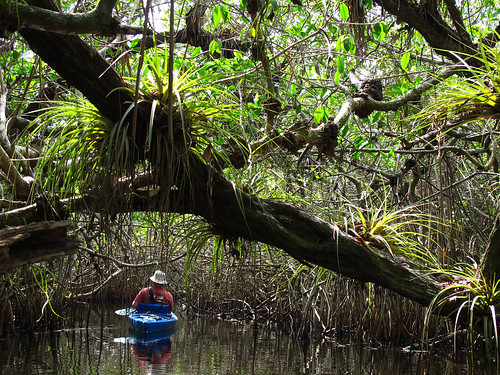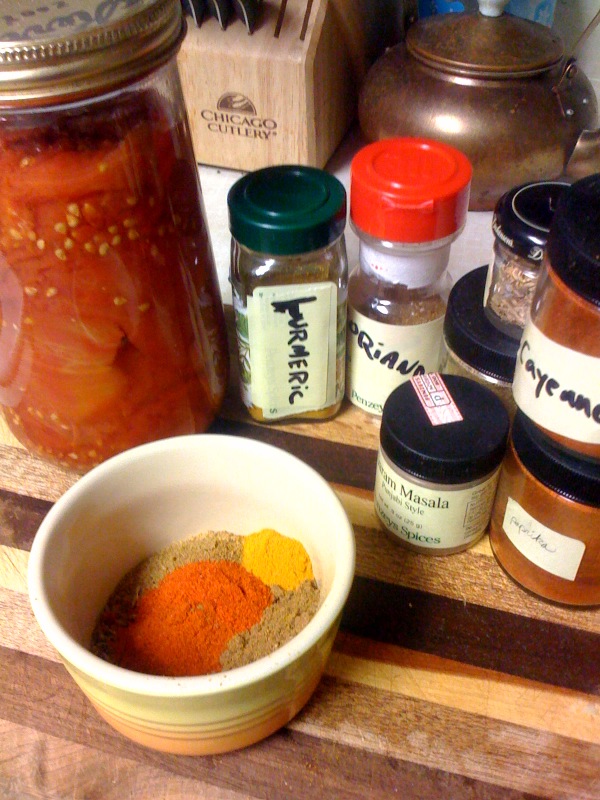Trip Report: Everglades

Trip Report: the Everglades
Being as it's wintertime for many of you right now, I thought I'd take time to share some highlights from my time in the Everglades this month.
A little backstory: I've recently taken up an occasional gig helping guide backcountry trips into Everglades National Park and the Ten Thousand Islands, so that's how I was able to score two weeks in the Glades on a nonprofit salary! I'm also from Florida, so I love to share my enthusiasm for what's left of its natural landscape after so much development.
Everglades National Park, Big Cypress National Preserve, and the Ten Thousand Islands National Wildlife Refuge are unique: The Everglades is the world's only river of grass, the combined area is the largest stand of mangroves in North America, and their combined area is 2.26 million acres - somewhere between the size of Delaware and Connecticut. The original Glades covered essentially all of South Florida from Lake Okeechobee and the Caloosahatchee River on down, but only a fraction remains. The environment is like nowhere else in the US, a great flat sawgrass prairie across which water from Lake Okeechobee slowly sheets, broken up by cypress strands and domes, gradually given over to a dense maze of mangrove swamps, bays, and rivers as the water turns from fresh to brackish to salt in the Ten Thousand Islands and the Gulf of Mexico. And yet you could drive right across it on I-75 or Highway 41 and never know what you were seeing - or missing.
After all the time I've spent amidst the crush of humanity at Yosemite or Yellowstone, the Glades feel empty - we never shared a campsite and passed only a few fishing guides along the way. It's a notoriously lonesome place, especially in the dead heat of the day when even a winter sun burns and every living thing seems to be taking shelter elsewhere. But it's also gorgeous, and, if you know where to look, full of amazing things:
-- Every morning we went out at dawn to watch the birds take off into the sunrise. The pre-plume-trade days of skies black with birds are long gone, but if you know where to look you can still find an entire island festooned with birds - ibis, egrets, herons, cormorants, pelicans - and watch thousands of ibis alight at once and move in great white skeins above your head, silent but for their wingbeats.
-- Birding on the whole was outstanding. Highlights: flotillas of white pelicans, an array of herons, white-crowned pigeons, nesting osprey, shy limpkins, and the occasional wood stork pair feeding along the shore. We paddled down to Gopher Key along a waterway popular with the birds, and around every corner flushed squawking herons (such a graceful bird, such an awkward SQUAWK) and ibis.
-- Piloting the skiff, laden with kayaks and gear, through the bays was no joke. One reason so few folks get into the Everglades backcountry is it's challenging to boat - a long, often arduously windy trek by kayak and/or a navigational nightmare by motorboat. The bays don't look it, but they're often inches deep at low tide, and rarely more than 4 feet deep, making knowledge of the sandbars and channels essential. Roaring across Sunday Bay, Oyster Bay, Chevelier Bay, Alligator Bay, all you can see in any direction is blue sky, black water, a long thin line of mangroves, and the occasional osprey overhead.
-- If you know where to find them, there are narrow waterways and mangrove tunnels so tight you can only use half a kayak paddle - or just pull yourself along by the dangling limbs overhead. From the outside, the mangroves look impenetrable, their arched "walking" roots revealing only muck and black water underneath, but the tunnels are used by birds, gators, and kayakers like us. Even big gators - ten feet or more - are scared of people this far back, and we startled a few big daddies coming around a bend; they slipped silently underwater (toward the kayak!) to safety. In one clear pond between tunnels, I looked down into the water to see a sandy bottom and the clear shapes of two gators as big as my boat just as still as could be on the bottom, just inches below my boat. In another pool, spotted gar circled beneath our boats, and elsewhere along the way dense schools of grunts glinted past.
-- Epiphytes - they cover the mangrove limbs effusively, a mishmash of cardinal wild pine, resurrection fern, spanish moss, and orchids. Some are as small as your pinky nail, others with a span of two feet or more. Most of the orchids don't bloom this time of year, but we did find some blooming night-scented orchids, in addition to butterfly orchids, helmet orchids, cigar orchids, and a snakelike leafless orchid, vanilla barbellata, close relative of the plant that gives us vanilla beans.
-- Sometimes you can paddle up from the mangroves into the sawgrass flats, where the sky opens up and the water is fresh.
-- Everywhere we went, the mullet jumped and slapped against the water. In one place the bay through which we paddled was so shallow the mullet kicked up swirls of mud and flashed their tails as they hustled away from our boats. Nearby, a couple of pelicans made a killing paddling in the muddy water, scooping up fish. What I wouldn't give for some smoked mullet out in Oregon!!
-- Follow the salt water far enough and you'll hit the Gulf of Mexico and the Ten Thousand Islands, tiny mangrove islands with spits of sand covered in worm-rock coral and pristine shells (no pre-dawn beachcombers here!). Nothing like a horizon that's all sky and water.
-- Campsites along the Wilderness Waterway - the route from Everglades City to Flamingo, 7 hours by boat, 7 days by kayak - are either old homesteads or Seminole-style chickees, raised platforms with thatched roofs above the water. The mosquitoes are omnipresent year round no matter where you camp. It was hard to believe our main camp, Darwin's Place, was once the home of a series of pioneer families, a patch of farmland, and finally the last full-time Everglades hermit (there were many - I guess they don't all go up to Alaska seeking solitude), who kept hundreds of fruit trees and a small cottage until the late 1960s, of which only the crumbling foundation remains. Ruined cisterns are wrapped by the limbs of strangler figs, and an array of voracious jungle plants hold court on what was once cleared land. I was particularly taken with the old Watson Place on Chatham Bend, a popular campground that was first a sacred Calusa site and then the home of the infamous E. J. Watson, brilliant businessman and farmer, caring family man, notorious Key West and Tampa roustabout, and cold-blooded killer of an unknown number of souls. Peter Matthiesson's fictionalized account of Watson - starting with Killing Mister Watson - is a must-read for Everglades visitors.
-- When I wasn't out on the boats, I was either in Everglades City taking in the local nightlife at Leebo's with the rest of the staff (basically a big screen porch with ice chests of Bud, a couple bottles of liquor haphazardly stacked on the bar, and that particular breed of old Florida fishing folk with thick leather-brown skin and worn-out baseball caps and a penchant for offering protective words of wisdom to young women whose skin and attire bely many years gone from the Florida sun. My parents made the trek down from my hometown 2 hours to the north, and we did the day tripper's circuit of cypress dome boardwalks and gentle walks through the sawgrass, plus local stone crab and king mackerel for dinner.
It was a mighty good trip.



